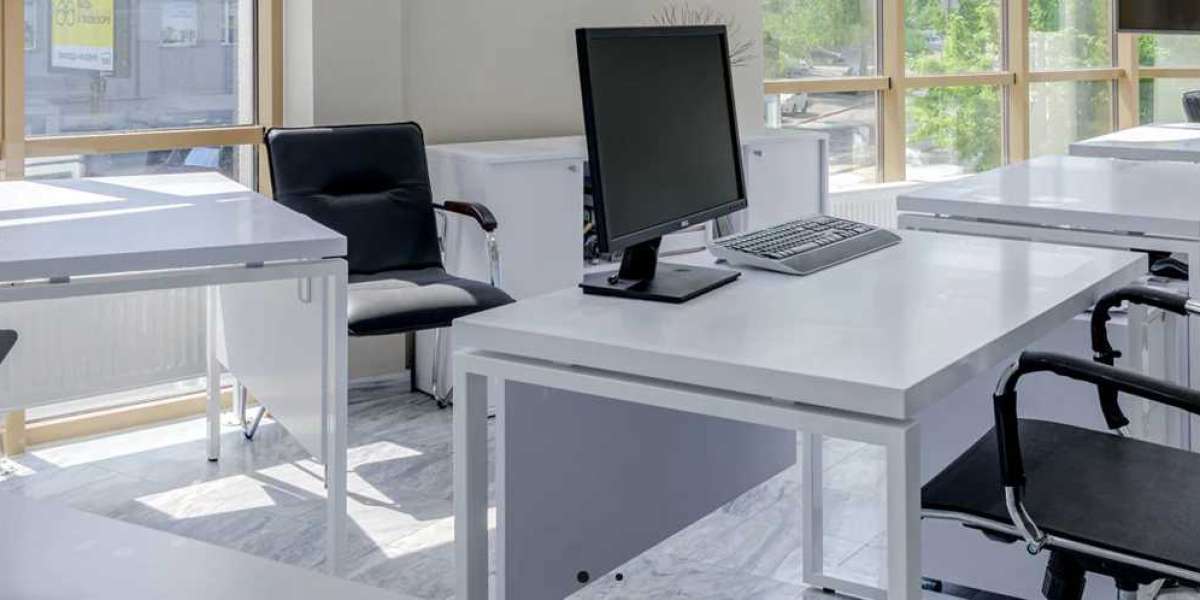Furniture plays a crucial role in influencing employee health and well-being, impacting both physical and mental aspects. Here’s how thoughtful furniture design and selection can enhance employee health and well-being:
1. Ergonomics and Physical Health
Ergonomic Seating:
- Adjustable Chairs: Chairs with adjustable height, lumbar support, and armrests help maintain proper posture and reduce the risk of musculoskeletal disorders.
- Dynamic Seating: Ergonomic chairs that allow for movement, such as tilting and swiveling, encourage employees to shift positions throughout the day, reducing strain.
Sit-Stand Desks:
- Height-Adjustable Desks: Sit-stand desks enable employees to alternate between sitting and standing, reducing the risks associated with prolonged sitting, such as back pain and cardiovascular issues.
- Promoting Movement: Encouraging regular movement can help improve circulation, reduce fatigue, and boost overall energy levels.
Proper Desk Setup:
- Optimal Monitor Placement: Ensuring monitors are at eye level reduces neck strain. Adjustable monitor arms can help achieve the correct height and distance.
- Keyboard and Mouse Positioning: Keeping the keyboard and mouse at elbow height and close to the body prevents strain on the wrists and shoulders.
2. Psychological Well-Being
Comfort and Aesthetics:
- Comfortable Furniture: Providing comfortable furniture contributes to a pleasant work environment, reducing stress and enhancing focus.
- Aesthetically Pleasing Design: Attractive and well-designed furniture can boost morale and create a positive workplace atmosphere.
Biophilic Design:
- Natural Elements: Incorporating natural elements like plants, natural light, and materials such as wood and stone into furniture design can reduce stress and increase feelings of well-being.
- Views and Spaces: Designing furniture layouts that offer views of nature or create relaxing spaces can enhance mental health and productivity.
3. Social and Collaborative Spaces
Collaboration Areas:
- Flexible Seating: Modular and flexible seating arrangements encourage collaboration and social interaction among employees.
- Comfortable Lounge Areas: Well-designed lounge areas with comfortable seating can provide informal spaces for employees to relax and collaborate.
Private Spaces:
- Quiet Zones: Providing furniture for private or quiet zones helps employees focus, reducing stress and improving productivity.
- Acoustic Solutions: Furniture with built-in acoustic properties, such as high-backed chairs or enclosed pods, can help create quiet areas in open-plan offices.
4. Promoting Movement and Activity
Active Furniture:
- Balance Boards and Desk Bikes: Incorporating active furniture options like balance boards, desk bikes, and under-desk ellipticals encourages movement throughout the day.
- Standing Meetings: High tables for standing meetings can reduce meeting times and encourage active participation.
Movement Encouragement:
- Break Areas: Designated break areas with comfortable seating encourage employees to take regular breaks, which is essential for maintaining physical and mental health.
- Staircases and Pathways: Promoting the use of staircases and creating pathways that encourage walking can help increase daily physical activity.
5. Inclusivity and Accessibility
Inclusive Design:
- Adjustable Furniture: Furniture that accommodates a range of body types and abilities ensures that all employees are comfortable and supported.
- Universal Access: Providing accessible furniture options for employees with disabilities promotes an inclusive workplace environment.
Workstation Variety:
- Different Workstations: Offering a variety of workstations, such as standing desks, traditional desks, and collaborative spaces, allows employees to choose the best option for their needs and tasks.
Conclusion
Investing in ergonomic, flexible, and aesthetically pleasing furniture can significantly enhance employee health and well-being. By prioritizing comfort, encouraging movement, and creating inclusive and engaging spaces, companies can improve employee satisfaction, reduce health-related issues, and boost overall productivity.








